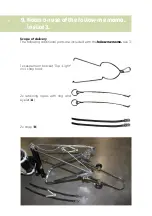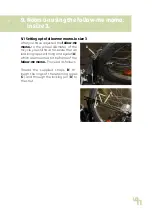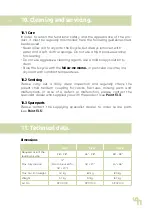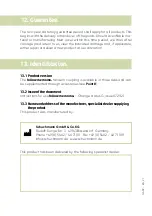
09
3. Requirements for the lead bicycle.
Both bicycles without suspension and full-suspension bicycles with rear
swing arm are suitable for use with the
follow me momo.
. Prerequisite: The
rear construction and the rear wheel rim must be strong enough to safely
adsorb the typical side forces, as also generated with one-wheel trailers
and bicycle trailers. If your bicycle steers in a "spongy" manner when using
the
follow me momo.
, it may not be suitable for use with the product. In
case of doubt: The manufacturer of a bicycle states whether their product
is suitable for the
follow me momo.
or not. Before mounting the
follow me
momo.
please enquire in the Service Department of the bicycle manufac-
turer whether the assembly is permitted. If applicable, have this approval
presented to you in writing.
4. Mounting the parent-child
tandem coupling.
The assembly of the parent-child tandem coupling is dependent on which
type of leading bicycle you have:
• If your bicycle features a hollow axle with quick-release clamp, please
read
sections 4.1 and 4.1.1
• If your bicycle has a solid axle with wheel nuts, please read
section 4.2
• If your bicycle has a hub gear with Click-Box, please read
section 4.3
4.1 Important information for working with quick-release clamps
• Open the quick-release clamp. Now you
should be able to see the word "Open".
• To close, move the lever so that you can
read the word "Close" on the level from the
outside. When commencing the closing
motion to approximately half the lever
path, the lever must move very easily, i.e.
without clamping anything.
• During the second half of the journey, the clamping power must increa-
se significantly. Finally, it should only be possible to move the lever with
difficulty or even great difficulty. Use the ball of your hand. In final positi-
on, the lever must lie parallel to the wheel; it must not project out at the
side.
• If the clamping lever can be rotated in a circle, the wheel or the yoke are
not sitting properly. You will have to open it again and increase the pre-
stress through rotation.
• Repeat the closing process, and check the fit once more. If the clamping
lever can no longer be rotated, the clamp is fitted correctly.










































